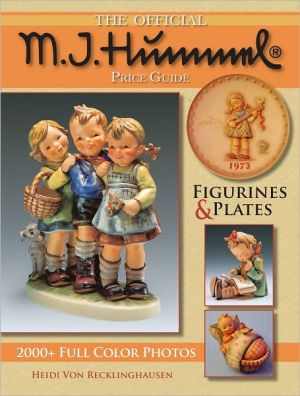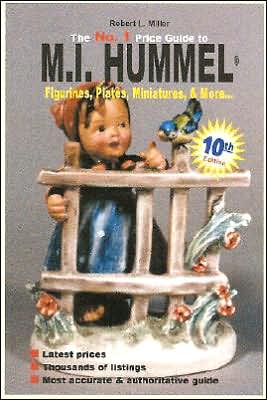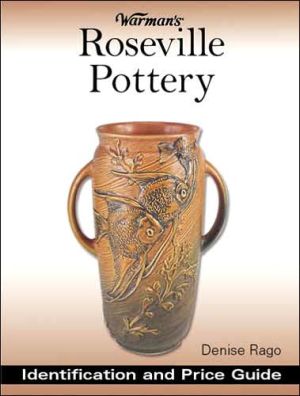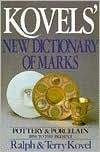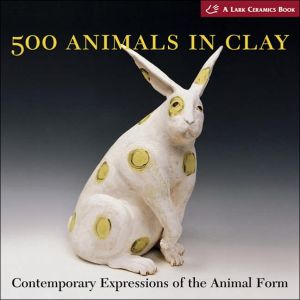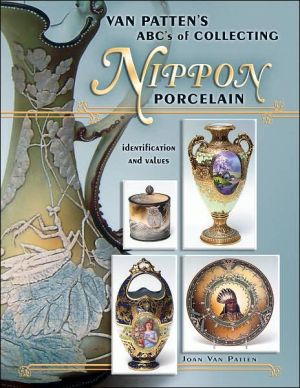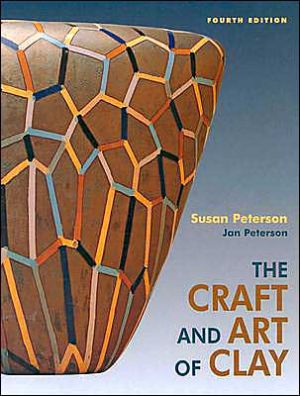The Mad Potter of Biloxi: The Art and Life of George E. Ohr
A brilliantly written, lavishly produced volume on an important yet little- known clay artist.\ Misunderstood and unappreciated during his lifetime (1857-1918), George Ohr, America's archetypal artist-potter, pushed the form of the vessel beyond mere function to the point of abstraction. Today the genius of this radical and sophisticated artist has finally been recognized. His thin-walled, paper-light pots, labeled grotesque in his day, are now seen as a tour de force of delicacy and...
Search in google:
A brilliantly written, lavishly produced volume on an important yet little- known clay artist. Misunderstood and unappreciated during his lifetime (1857-1918), George Ohr, America's archetypal artist-potter, pushed the form of the vessel beyond mere function to the point of abstraction. Today the genius of this radical and sophisticated artist has finally been recognized. His thin-walled, paper-light pots, labeled grotesque in his day, are now seen as a tour de force of delicacy and restraint and a stunning exploration of the plasticity of clay. Ruffling, twisting, tearing, and collapsing his fragile pots, Ohr anticipated much of what we take for granted in contemporary art and ceramics. Stunningly illustrated with 140 color images of his most important pieces, this landmark volume, winner of the George Wittenborn Award for outstanding art books from the Art Libraries Society of North America, presents the first major study of Ohr. Beautifully woven together, the text and images confirm a judgment the Mad Potter once passed on himself: "Unequaled! Unrivaled! Undisputed!" he wrote on a sign outside his shop, "Greatest Art Potter on Earth!" Author Biography: Garth Clark, a widely published critic and historian of ceramics, is the founding director of the Institute for Ceramic History and the author of Abbeville's American Ceramics: 1976 to the Present and The Eccentric Teapot. Robert A. Ellison, Jr., an artist and author, is a founding member of the American Ceramic Arts Society and has lectured on Ohr. Eugene Hecht is a widely published authority on Ohr and American art pottery and a founding member of the American Ceramic Arts Society. John White is a photographer based in New York whose work ranges from fine art and design to advertising. Publishers Weekly The self-styled ``Biloxi Mud Dauber,'' Mississippi art potter Ohr (1857-1918) produced thousands of ceramic pieces that were out of step with their time. Detractors have called them bizarre, crude, even ugly, but his supporters saw Ohr as an eccentric genius, a romantic who staked unexplored aesthetic territory with unprecedented shapes and idiosyncratic glazes, and created a polychromatic spectrum of works. A picaresque rebel with flashing eyes and a long white beard, Ohr deemed these pots his ``mud babies.'' Scores of them are on display in this monograph illustrated with 140 color and 100 black-and-white photos. Clark wrote American Ceramics , Ellison is a founder of the American Ceramic Arts Society and Hecht is an editor of Arts and Crafts Quarterly. (Nov.)
From "The Times and Life of G. E. Ohr" by Eugene Hecht\ Part 2: At the Height of His Art\ Flames rushed up and out from the Bijou Oyster Saloon on the ground floor of the old two-story Swetman Building. A night watchman seeing smoke over on Pass Christian ran to sound the alarm bell at around 2:00 a.m. Before the twelve-man volunteer fire department could be roused and mustered, and the handsome though somewhat old-fashioned hand pumper hauled to the blaze, the fire had fed itself the building and was belching sparks. Within minutes the adjoining Masonic Opera House was wrapped in waves of flame and the conflagration burst out in all directions: cottages, business buildings, shops of every kind were ablaze. The inferno engulfed a shoe store and barber shop in a building owned by George Ohr, Sr. Over twenty establishments were burning now, including a two-story cottage that belonged to him as well. At some distance from the gutted Swetman Building four more small frame structures, all owned by the senior Ohr, were aflame: one of these housed Sing Lee's Laundry, another Eikel's tailor shop, and next to catch spark and fire was the grocery store run by Mrs. Johanna Ohr. The flames ran up the tall, flat facade that gave the little building more of a presence than it deserved, up to the very top where George had balanced a row of his pots. Moments later, just behind the crumbling grocery, the famous Biloxi Art Pottery came ablaze; furious, orange-red flames jetted from the windows and lapped up the grey, weathered boards, all glowing like a great kiln stoked full with tinder.\ For the Ohr family the sun rose that morning (October 12, 1894) on a scene of crushingdevastation: the house and everything in it was gone, the pottery was gone, everything lay in ruin. There in the rubble, posturing tall, posing for the camera, was George Edgar Ohr, a straw hat on his head, one arm properly braced on a hip, Leo and Clo at his sides, and all about the work of his youth, shattered and smoldering (Figure 12). Penniless, robbed of the treasure he would not sell, Ohr was again at a turning. A lesser spirit might have paused, but this was no tradesman who could contemplate alternatives—there were no alternatives but to rebuild and feel the wheel again.\ Carefully he picked through the rubble, putting aside and gently heaping up the burned and broken bodies of his cherished artware. These were his "killed babies," and he could no more part with them than he could part with a child who had broken an arm. His sweet little Asa had died less than a year before (December 7, 1893) and that loss compounded the sorrowful analogy. Some of these charred remains of his youth would be carefully preserved for all his life, and well beyond. Frozen as they are in the flamelight of that horrible Friday (Figures 77-81), today they are an important guide to his stylistic development. To George they were the dead offspring of his younger days, and like a worn prayer book, could not simply be thrown away.\ Not every pot he had made was lost in the fire. Many a jug, water bottle, pitcher, and trinket, and even a few vases and ewers had found themselves to safety all around the country. A precious few other vessels brazened out the flames. The monumental unglazed vase with the skaters was away in the backyard and the water-bottle stand with the head was probably not far from it; they both survived unscathed. It seems likely that several plaster pitcher molds and even some bisque ware withstood the holocaust. But the special pieces that he coveted most were almost all in ruin. Many of them managed to remain unbroken only to have their low-fired glazes blistered black, permanently encrusted with soot and ash.\ Mr. Ohr was fortunate in one regard: his pottery establishment had already become a local landmark and so he was able to quickly raise eight hundred dollars in Biloxi to rebuild. During the winter of 1894 to 1895 he oversaw the construction of a modest little house and just north of it a grand new workshop capped off with a five-story pagoda-like tower. The flagpole on the roof insured that it would be the tallest structure for miles around, something folks would have no trouble finding. As for construction, it was a simple affair, a wooden frame with boards on the outside, no finished ceilings or plaster walls, but it did have glass windows:\ Architecturally, it is chaotic, having some of the characteristics of every well-known type of building except that which it might most readily be expected to have—the low-pillared, balconied, Colonial house in which the South abounds.\ The ground floor suggests a log cabin, the upper ones a cross between a Chinese pagoda and a Russian country house, the whole the dream palace of a freakish brain. Needless to say, Mr. Ohr built it himself. And he's proud of it. The corner-stone isn't a stone at all, but a fantastically twisted log of wood suggesting the headless body of a man.\ Painting in bold, bright letters across the southern face he christened the building the Biloxi Art Pottery Unlimited. In short order George was back in production, but this time with a brilliance and creative drive that seems to have taken its energy from the fire itself.\ He had experimented before with indentations and creases, folding, crushing, and distorting a piece that was kept plastic for several days after it had come from the wheel. George had also already invented the technique for transforming the lip of an exquisitely thin-walled vase into a symmetrical succession of graceful folds; he was an unrivaled thrower and had made many vessels that were remarkably light and delicate. "Certainly he could throw wares of considerable size with walls much thinner than any other potter ever has accomplished. It is quite probable that George Ohr, rated simply as a mechanic, was the most expert thrower that the craft has ever known." And early on, having probably accidentally chipped the rim of a piece, he boldly and deliberately made chipping a decorative device. Still, what remains of the prefire work on the whole seems relatively reserved. In a strange way the fire may well have been fortuitous: the flames burned away the old and quickened the growth of the new. It didn't happen all at once, but soon enough Ohr was pushing the bounds of restraint with both hands: reticulating, folding, pinching, twisting, easing the thin clay into new visual rhythms that captured a thrilling vitality and excitement, a vis viva.\ When the resident poet-philosopher of Biloxi wasn't making pots he was painting signs chiding, admonishing, challenging, welcoming, and lecturing the world. An invitation to come visit the pottery, lettered on a huge signboard, swung at the corner of the street and beneath it a verse:\ The poet sings in dainty rhymes/Of summer days and sunny climes; Of beauteous maidens, passing fair, With witching eyes and wavy hair./Turn near the end and you're apt to C/A welcome to the Pot-ohr-e\ A long slender bit of unbridled bravado was wedged in place at the southeast corner of the building under the overhanging porch. Modestly it proclaimed, -Unequaled.-Unrivaled.Undisputed.-Greatest.-Art Potter. On Earth. In time the edge of that porch itself became one long wrapped-around sign: George E. Ohr, Delieator in Art Pottery; Magnum Opus, Nulli Secundus, Optimus Cogito, Ergo Sum. And just over the door, Erected in 1888, Burned Out and Rebuilt in 1894 by the Unequaled Variety Potter, Crank, etc. The use of the word crank was explained by a contemporary interviewer: "Mr. Ohr says that he believes firmly in majority rule. The majority of people in Biloxi think he has wheels [in his head], so he considers it only fair to intimate as much to the general public."\ To attract attention George had created the Mad Potter persona, but it was, like all life's masquerades, no more real than that. It came easily to him, and despite that natural predisposition to the part and the liberated delight with which he took advantage of it (for Mr. Ohr could be rude and mischievous), he was assuredly not "crazy." The people who knew him, knew him to be egocentric, "a show off," at times thoughtless and self-indulgent. He was, if anything, nonconformist-mad, artist-mad, genius-mad, hardly mad-mad, and he so enjoyed the game. "I found out long ago that it paid me to act this way," George once confided, his black eyes smiling.\ The Cotton States and International Exposition opened at Piedmont Park in Atlanta, Georgia, at sundown on Wednesday, September 18, 1895. President Grover Cleveland touched an electric key in his library at Gray Gables, a resulting sharp metallic click sounded in Atlanta, and that was immediately followed by cheering and the simultaneous thunder of a hundred cannon. The self-proclaimed "greatest art potter on Earth," never one to miss a fair provided it wasn't too expensive to get to, found himself a spot on the midway over by the merry-go-round near the Jackson Street entrance. His modest booth was east of the Monkey Paradise and the Ostrich Farm, not far from the Rocky Mountain Ponies. From where he set out his wares he could see the Phoenix (Ferris) Wheel and might even have heard the gunfire whenever Buffalo Bill's Wild West kicked up dust in the Grand Stand. George wasn't listed among the official displayers (there were six thousand exhibits), but there he was anyway and he brought along a young assistant, a Mr. H. J. Portman (that's Harry on the right in Figure 14).\ Portman was raised by the Ohr family, and George, who regarded the boy as a foster son, taught him the potter's trade. Being an artistic fellow, Harry painted signs and occasionally modeled decorations, sprigging them onto pieces George had made. More often he decorated molded puzzle jugs—molding may have been his speciality. Though he seems never to have worked the wheel he did build things with clay, such as knickknack shelves and the like. Every now and then Harry produced some charming incised designs and even did a little under-the-glaze slip painting, but the scarcity of faience carrying Portman's mark (a conjoined JHP or simple H.P.) suggests that he rarely worked on the thrown artware. There certainly were plenty of other things for him to do around the shop, and he stayed on for a number of years.\ Even before Ohr had come to the midway in Atlanta, to that ramshackle shack decorated in checkerboard oilcloth, he had already made the giant leap in imagination that would enable him in just a few years to create a new ceramic art. At his feet on the dirt road were a half-dozen old standbys: molded pitchers, like the Tarpon on the right, the Steamboat, and the Musical Cherubs. And as expected there were a few of his bibelots, as well: a realistic ceramic conch shell and a tiny cabin. But among these essentially commercial products were five rather interesting "mud fixens," which presage some of his revolutionary work of the last years of the century. One (at his right) has been twisted, top against bottom, creating a body of vertically spiraling pleats. Another has its rim folded and its sides indented. A third is a delightfully original arched-conical form with a long neck and tall pedestal base. One (on his left) shows a tightly controlled scalloped rim playing off against a matching band of indentations. And the last rather ordinary looking piece (just in front of him) is his much belabored Peach Blown vase, a supposed duplicate of a famous Chinese porcelain that underscores his mastery of glaze. Though Ohr made much of this particular vase it's really rather homely, looking very little like the pink-to-yellow skin of a peach and even less like the Chinese porcelain. Still he did accomplish the extraordinary effect of a gradated glaze thinning in hue, albeit from an unattractive olive-brown to the clear yellow-orange of the body.\ It appears that the Biloxi Mississippi Potter also had a little booth indoors in the Machinery Building (Figure 15) where he sold his "clay novelties," offered "the Finest Assortment of After Dinner Cups in Atlanta," and made "Artistic Souvenirs" right in front of your eyes. Ohr had come with a large selection of delicate demitasse cups and wafer-thin matching saucers that must have been quite popular. With Portman watching over the affairs of the Biloxi Mississippi Art and Novelty Pottery back on the midway, George could sell a different line of wares in the Machinery Building several blocks away. The Atlanta Exposition lasted only a few months, ending on December 31, 1895, and George Ohr, M.D. (he occasionally added that title, explaining that it stood for Mud Dauber) returned home.\ He had apparently done quite well, winning some sort of prize at the fair. Thus encouraged, the new year began on a positive note. By then the response to George's one-man show had moved him into the pale spotlight of a minor celebrity, even inspiring a rather dreadful novel called The Wonderful Wheel (1896). Its main character was a "hoodoo" southern potter "with strange, flashing, black eyes, and a black mustache so long that he draped it over his ears when he worked." A potter who "made queerly-shaped jugs and vases, and mugs which poured the water out when you were not expecting it."\ For the Pot-Ohr 1896 was a productive year from both a commercial and, far more importantly, an artistic standpoint. One of the practical things he tackled at that time was the creation of several new molds—possibly to make up for losses in the fire of 1894. In any event, in 1896 he produced plaster molds for long, medium, and short pouring spouts, dated March 4, March 4, and November 20 respectively. The bodies of his marvelous coffeepots and teapots were always thrown, but their graceful serpentine spouts were best molded separately. Moreover the large, early pitchers like the Tarpon (which most probably predated the fire) were made by forcing clay into the mold impression by hand from the inside. They came into the world without handles and Ohr had been making a variety of new handle molds starting April 4, 1895, soon after the pottery had been rebuilt.\ Both the Tarpon and Steamboat pitchers carried simple local scenes sculptured in a flattened, crude, though charming country style that was typical of his work. They're wonderful examples of nineteenth-century American folk art. The same kind of modeling appears in miniature on a set of brazenly bawdy ceramic tokens, each of which has a sophomoric raised rebus on both sides (Figure 95). These were facsimile brothel coins in the ancient Roman tradition. And given the robust trade going on in the sporting houses in the notorious Storyville district of New Orleans, matters of the bagnio were a natural source of local humor. It's easy to imagine George, a devilish smile on his face, pressing one of these little molded bits of mischief into the hand of some unsuspecting victim. For whatever bizarre reason he produced these tokens of the lupanar, he certainly must have anticipated a considerable demand for them: he made hundreds—all unsigned.\ Though his molded wares were inexpensive to produce and appear to have sold well, the genre did not always seem to bring out the best in Happy George. In fact he became increasingly pragmatic when it came to producing molds. He certainly was not above casting them directly from any object that took his fancy, and had been doing that unceremoniously for years—a remolded doorstop survived the fire of 1894, and there's a lion's head boss that was first a glass paperweight. A milk-glass knicknack of a woman's hand holding a bird (patented, August 1889) served as the model for a mold that subsequently produced ceramic inkwells. Indeed a mold exists that was obviously formed by simply pouring plaster onto a cut-glass bowl. He seems even to have made molds of crabs and sea shells directly from the real thing, creating several delightful works in the process. After a while George began producing a number of smaller rather sophisticated "fac-simile old style pitchers," which were much more ambitious in their sculptural decoration and much more derivative in their inspiration and execution. In short whenever he felt the need, improper George simply swiped what he fancied: he thought nothing of using a handsome pressed-glass pitcher and a bit of plaster to produce a supply of molded earthenware clones. Though he did introduce several new pitchers that year, including a fine one carrying the likeness of Grover Cleveland (April 17, 1896), molding would not serve as a vehicle for his craft very much longer.\ The shop was starting to fill in nicely by early 1896 even though the Greatest Variety Potter in the World had already begun lining the shelved wooden fences that bounded the property with hundreds of pieces of artware—perhaps to keep them out of harm's way should fire strike the building. Mugs and pitchers hung from nails in the ceiling beams and the sagging shelves carried a joyous clutter of creation, "no two alike."\ On March 18, 1896, showman George had a visitor to the shop he would always remember. On that dreary day, big as life, who should walk in the door but Mr. Joseph Jefferson: the Joe Jefferson who had thrilled audiences across the country with his unforgettable portrayals of Caleb Plummer, Bob Acres, Dr. Ollapod, Dr. Pangloss, Mr. Golightly, Huge de Brass, and of course, the ever popular Rip Van Winkle. He had, as one contemporary put it, "an exceptional hold upon the heart and imagination of his time." In due course the greatest variety actor in the world was handed a pin and a damp pot and invited to add an immortal inscription. What came out was Rip Van Winkle's then already famous toast, "Here's your good health and your family's and may they all have long lives and prosper." By now the better half of Rip-incarnate was outside in the buggy "constantly interrupting: 'Hurry up, Joe! It's going to rain.'" Ohr, who had a broad childlike streak, was so thrilled by the visit that he put the grail in a place of honor and proceeded to engrave those memorable words and date, in a facsimile Jeffersonian hand, on almost everything he made that day.\ Newcomb College had moved to expanded quarters back in 1891 and the art department moved with it. In the boiler room of the new building they installed kilns and wheels for the making of pottery. The first professional potter hired was a Frenchman named Jules Gabry who had worked in Cannes and later traveled to Brazil. He was already elderly when he came to New Orleans and did not stay long at Newcomb. By then the need for the Baronne Street operation had faded and when Gabry's successor departed after only a short while, J. F. Meyer became potter at Newcomb (probably in the second half of 1896), a job he would hold with distinction the rest of his long life. During the period from 1895 through the next two decades Newcomb was a center of the Arts and Crafts Movement in the United States. Along with firms like Rookwood, Grueby, and (after 1901) Van Briggle, it was one of the major commercial producers of American art pottery.\ As for Mr. Ohr, although he was creating his finest art, things weren't going smoothly financially. The flasks, pudding molds, flowerpots, drainpipes, and such, sold well enough but there wasn't much money to be made in that. The competition with glass bottles, tin cans, and inexpensive white tableware had already changed the industry and these were lean times for most. Besides, George was a neglectful, terribly bad shopkeeper who wouldn't interrupt "a conversation with the shabbiest person displaying an interest in his work" to sell a flue pipe to some neighbor who didn't care a bit about art. Nor was he particularly willing to part with his artware. "Occasionally he turns out a few bits for visitors to snatch at as souvenirs, but not unless necessity compels him to do so. On some piece that strikes his fancy he will put a fabulous price." A decorative mug might be handsomely tagged at five dollars, a vase at twenty-five dollars and much more; the high prices were a measure of the potential buyer's commitment to and appreciation of Ohr's art. Only "if you become communicative, and rave a bit over some of the finer bits of faience" will you endear yourself to the potter and even have a chance of taking home something special. George had no desire to part with what he valued, and no interest in selling what he didn't; in all, hardly a strategy for success. But George didn't seem depressed by the modesty of his circumstances: "Every genius is in debt," he quipped.\ The birth of Oto T. Ohr on September 11, 1895, had given him four children to feed and made the lure of moonlighting even more appealing. Meyer was in New Orleans and if George worked a bit for him, especially in the off-season, he could spend even more time in Biloxi on his art and less fretting over flue pipe. Besides, New Orleans was such a great place for a man like him to visit. As tradition has it, George Edgar Ohr, at the height of his artistic powers, supposedly returned to the big city to work at the flourishing Newcomb Pottery. The incomparable genius, the superb innovator, was again assistant to Uncle Joe at the wheel of tradition.\ Mr. Ohr knew and liked Monsieur Gabry and it's possible that both of them may even have assisted Meyer for a time at Newcomb. In any event, George invited the old gentleman "to share his daily bread, and his potter's clay." It was probably around 1897 that Gabry packed his meager belongings and made the journey to Biloxi, but he was already despondent and didn't remain long. It's not clear what happened next, but he seems to have commited "suiside in Biloxi's water—August 18th, 1897," as attested to by inscriptions on several of Ohr's pots. When the old man was gone his potter's wheel was carefully hauled up to the foot of the last flight of stairs leading to the sunny roof of the pagoda. George had a strong sense of history and stored the ancient kick-wheel in the corner where it would be safe.\ It is not known when the Blacksmith Potter was in New Orleans, but each sojourn must have been brief. With the easy availability of freight trains, our free spirit could have come and gone over the next several years whenever he felt the need to earn a little extra cash. In any event, like Meyer he would have only worked during the spring and fall semesters and been off the whole summer. It is known that George was in Biloxi in early 1897 because he was visited by the editor of the Brick, a trade periodical that subsequently carried a rather complimentary two-page story called "A Biloxi Pottery." Ohr was at home in early 1898 too, when Josephine became pregnant with Flo Lucagina (who was born on December 11, 1898, and died before her second birthday). It's quite revealing, though, that for whatever time he did spend at Newcomb, for whatever energy he did invest, there does not seem to be a single one of their vases bearing his mark, or even the slightest trace of his aesthetic influence. And that's all the more ironic, since at that very moment Mr. Ohr was undoubtedly the greatest potter on earth. Family legend has it that picaresque George was ultimately asked to leave the prim and proper portals of H. Sophie Newcomb Memorial College, it would seem, for conduct unbecoming a potter to decorous young ladies. Though no documentation exists on the affair, that part of the oral tradition rings true enough.\ George really was a fun-loving character, whose sexuality bubbled up in the sensuality of his work. Occasionally less restrained, he was led to the raucous edges of good taste by an adolescent sense of humor that betrayed him at every turn. What resulted was anachronistic nineteenth-century Funk: a sculptured bisque breast, a vulvate slit coin bank incised with hairlike strokes—perhaps for the benefit of the blind (Fig. 94). There is a story of a local justice of the peace, Orin Davidson, a friend and admirer, who one day brought home a piece of Biloxi bawdryware to add to his collection of Ohr's work. The judge's more sober wife insisted that he immediately remove "that thing" from the house. The glazed phallus promptly vanished, probably returned to its grinning maker—George and the judge must have had a good laugh. One of Ohr's favorite fair trinkets, one that he made by hand in great abundance, was a small glazed turdefied chamber pot. Even before that tasteless bit of whimsey, he had produced scatological jokes in the form of appropriately lifelike pads of mock animal ordure, which might be placed on a rug or under a chair for the delight and amusement of all.\ The notion of Ohr freight-hopping back and forth to Newcomb is not precluded by the fact that dated examples of his own artware exist from 1895 through 1907, inclusively. For example, in 1897 a yellow fever epidemic swept Biloxi and George was there with his family. He left a poignant record of it on the bottom of a pot: Mad[e] during the Yellow Jack Scare Sept. 12, 1897. A six-inch bowl carries across its bisque face the inscription: Mad[e] in the Presence of my Dear great Mama Dec. 14-8 pm 1898. Always the devoted fan of Mr. J. Jefferson, Ohr made a large plaque (101/2 x 101/2 inches) dated 1898 depicting Joe's Buzzards Bay, Massachusetts, residence.\ Still, the links with Meyer were strong and long-lived. That the two old friends often came in contact with each other during this period (in Biloxi and at Newcomb) is at least suggested by a molded bisque pitcher with Ohr's Biloxi mark, dated 1899, which is identical to a glazed specimen marked Jos. F. Meyer, the Pottery Club, 249 Baronne Street, N. O., La. In any event, George liked to travel and it is known from at least three of his pots, also carrying the overlapping script F-S mark of Susan Frackelton, along with the inscribed date '99, that Ohr probably visited Milwaukee, Wisconsin, that year.\ Folk potters often scrawled their names and dates across their work, and Pennsylvania redware pots inscribed with verse date back to the 1750s. Having been inspired to do the same by his encounter with Jefferson, George slowly began to appreciate and explore the artistic-communicative possibilities of the device. All his life he was a man who used language as freely as he used clay; after a day's work he'd often stay up late into the night typing poems, long letters, and bits of philosophical wisdom. Writing on a piece of ceramic seemed to give permanence to the words, and that appealed to him. A multicolored vase is hand lettered all around its body:\ With Earth's first Clay they did the Last man knead/And there of the last Harvest sow'd the Seed And the first Morning of Creation wrote/What the last Dawn of Reckoning Shall read.\ Omar Khayyam Dito Pot. Ohr E George Biloxi-4-1-1899.\ Always the bad boy, George inscribed a brown, two-handled mug with this bit of sophisticated humor: "A Hot Tomoly! While we were on the beach indulging in nature's folly the sun got 2 my back while the sand was Hot To Molly's."\ But his most elaborate use of "wordart" is a large umbrella stand dated Dec-18-1900 that he created for the Smithsonian Institution but never bothered to deliver. Its entire surface serves as a canvas for a sociopolitical statement in the form of a touching letter sent to him by a friend who had been forced to leave Biloxi for speaking out on behalf of a "fearless paper." The editor of the newspaper in question was subsequently murdered. This fascinating time capsule is further adorned with a wonderful commentary, a bit of philosophy in verse from the Blacksmith Potter (the entire text is included herein on p. 178).
ForewordThe Times and Life of G. E. Ohr by Eugene Hecht "No Two Alike": The Triumph of Individuality by Robert A. Ellison, Jr. Clay Prophet: A Present Day Appraisal by Garth Clark Appendix A Appendix B Endnotes Bibliography Index
\ Publishers Weekly - Publisher's Weekly\ The self-styled ``Biloxi Mud Dauber,'' Mississippi art potter Ohr (1857-1918) produced thousands of ceramic pieces that were out of step with their time. Detractors have called them bizarre, crude, even ugly, but his supporters saw Ohr as an eccentric genius, a romantic who staked unexplored aesthetic territory with unprecedented shapes and idiosyncratic glazes, and created a polychromatic spectrum of works. A picaresque rebel with flashing eyes and a long white beard, Ohr deemed these pots his ``mud babies.'' Scores of them are on display in this monograph illustrated with 140 color and 100 black-and-white photos. Clark wrote American Ceramics , Ellison is a founder of the American Ceramic Arts Society and Hecht is an editor of Arts and Crafts Quarterly. (Nov.)\ \

